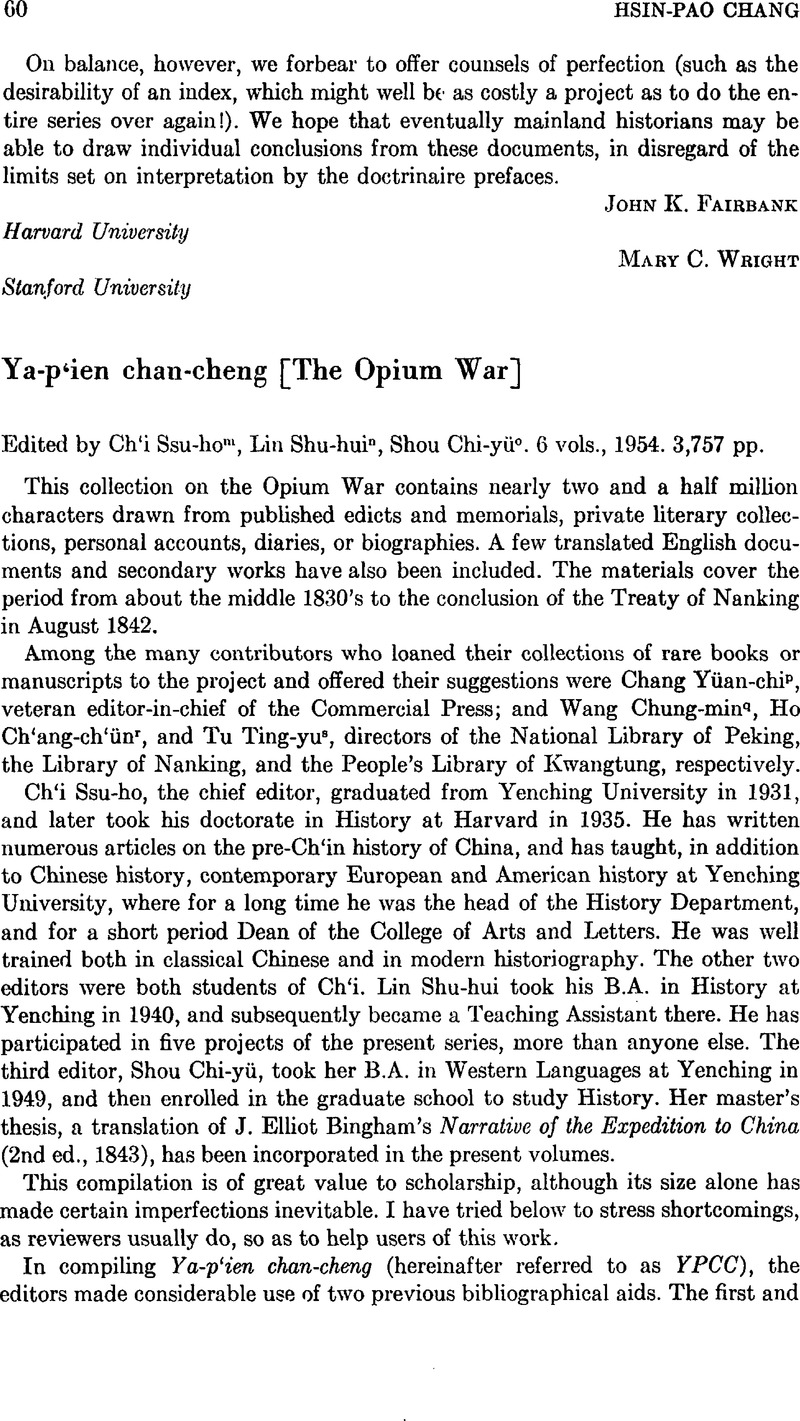Article contents
Ya-p'ien chan-cheng [The Opium War]
Published online by Cambridge University Press: 23 March 2011
Abstract

- Type
- Special Review Article: Documentary Collections on Modern Chinese History
- Information
- Copyright
- Copyright © The Association for Asian Studies, Inc. 1957
References
1 Nominally the list contains 244 titles, but ten of these items are virtually duplicated in other included titles.
2 This estimate is based on a careful survey in the Chinese-Japanese Library of Harvard University and the Library of Congress in May 1956, and consultation of the Union Catalogue of the Library of Congress, representing the holdings of other libraries in this country.
3 For instance, Lenin's theory of capitalism and imperialism is used to criticize D. E. Owen's book, British Opium Policy in China and India, YPCC, VI, 571.Google Scholar
4 In commenting on the works of Kuo T'ing-i and Wu Yü-kan, YPCC, VI, 548.Google Scholar
5 YPCC, VI, 533, 559, 568, and 569Google Scholar. At the same time, the editors praise A. S. Thelwall for being opposed to Britain's China policy, VI, 554–556.
6 This figure includes 158 pages originally translated from the Chinese Repository in 1839 and 1840 by Lin Tse-hsü's staff, 40 pages reproduced from five items of the holdings of the British Museum, and 28 pages from K'uei-yung liu-tu, a hand-duplicated copy of which is available in the Library of Congress.
7 The YPCC editors are incorrect in stating that the memorials in this collection are not abridged (VI, 520). For instance, two memorials of Lin Tse-hsü appearing on pp. 23–29, chüan 1, are not complete. Compare them with the versions in YPCC (II, 133–137; 139–142) which are based on Lin Wen-chung-kung cheng-shu [The Political Writings of Lin Tse-hsü]. The YPCC editors also erroneously state that this collection consists of four chüan; it is actually in six chüan.
8 The main body of YPCC roughly breaks down as follows: MSS published for the first time, 955 pp.; materials from rare and obscure volumes, 1,216 pp.; translated materials, 491 pp.; source materials well known to specialists, 865 pp.; appendices and bibliography, 163 pp.
9 Eighty-four volumes actually contributed to the text proper of YPCC; the other 70 titles were only annotated in the bibliography.
10 The manuscript of this review was considerably shortened because of the lack of space; however, the author would be happy to send supplementary materials supporting his general remarks to interested readers.
11 See YPCC, III, 29, 37Google Scholar; IV, 645; V, 519, 545; and VI, 251.
12 For discrepancies in identifying authors, compare I-fen wen-chi in the bibliography on VI, 511 with VI, 1; here the author of I-fen wen-chi was given as unknown in the bibliography, but was said to be Liang T'ing-nan in the text. For inconsistencies in giving dates of documents, see YPCC, IV, 651 and 654.Google Scholar
- 1
- Cited by




